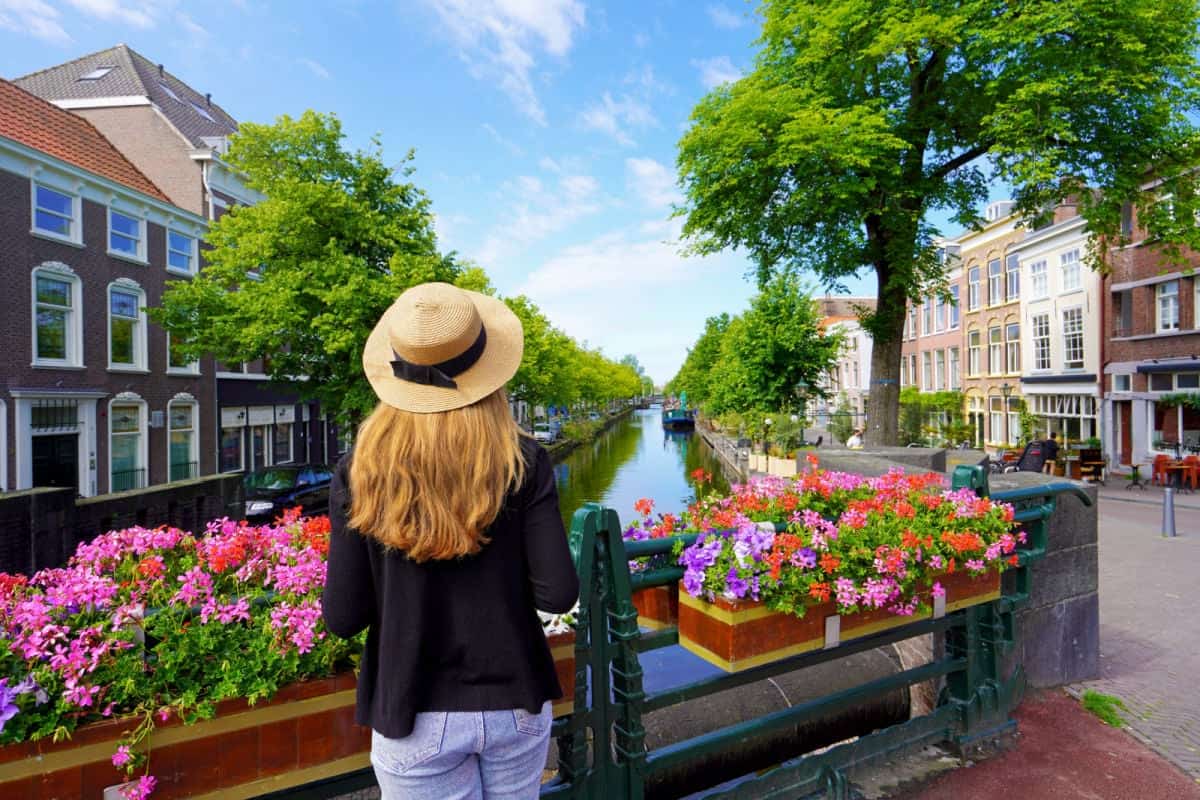Europe is the go-to hotspot for Americans on vacation now that the continent’s border curbs have been lifted and life is back to normal.
From the Atlantic shores of Portugal as far East as the Mediterranean beaches of Turkiye, it is once again awash with tourists.
Though it may be difficult to track travel trends across the continent, as all European destinations – including the lesser-known ones – are reporting a record increase in tourism, one city in particular has stolen the spotlight by being named the best to be a tourist in.
If you’ve ever spent a long weekend in this electric capital, you might feel inclined to agree:
Amsterdam Is Europe’s Best City Break

As confirmed in the latest report issued by the European Travel Commission (ETC) earlier this year, concerning travel expectations for this summer, at that time, 72 percent of those surveyed, mostly hailing from Europe, were planning to take a trip to Amsterdam between April and September.
This makes Amsterdam one of the most sought-after destinations in the bloc, despite worrying levels of tourism and the ongoing efforts undertaken by municipal authorities to make the Dutch capital less attractive to short-term visitors.
As overtourism rises, Amsterdam officials have moved to curb the operational ability of AirBnB rentals, reviewing liberal drug policies in order to distance the city from its reputation as a party capital and introducing higher visitation taxes.

This is all to no avail, as tourists keep flocking into the Venice of the North.
In fact, new research conducted by VisaGuide crowns Amsterdam as the ‘best capital city to be a tourist’ in Europe, outpacing hotspots like Rome, Paris, London, and Lisbon.
But what makes it so great that travelers keep on coming, even when the local attitude towards tourism isn’t the most welcoming one?
Why Are Tourists Still Flocking Into The Jam-Packed ‘Dam’?
First of all, Amsterdam is extremely pedestrian-friendly.

Whether it’s strolling the numerous picturesque canals, exploring the busy shopping streets lined with traditional Dutch cheese stores, or simply commuting daily, you will find it is incredibly easy to walk.
All of the main landmarks are crammed into a single area, informally called Central Zone, and you can save a lot of money on public transportation simply by exploring on foot – or of course, cycling, as this is Europe’s cycling capital.
From the Herengracht, the main canal, to the Rijksmuseum, Amsterdam’s world-renowned national museum, it is a 19-minute walk and an even shorter bike ride through charming canal-front streets.

Similarly, it takes only 16 minutes to march from Anne Frank House to the Oude Kerk, formerly a medieval church and the city’s oldest monument.
A Free Society
Then, there is Amsterdam’s unique, liberal approach to life.
You shouldn’t be surprised if you accidentally get a good sniff of ganja as you marvel at the romantic Dutch Baroque architecture, nor if you happen to pass a brothel where sex workers unashamedly flaunt their attributes on windows, beckoning you to come in on your way to grab dinner in the Red Light District.

Amsterdam natives may be the most patient with tourists, but if there’s one thing that’s true about the Dutch capital is that there are very few taboos regulating social life.
As long as you keep your business to yourself, locals don’t really care about your sexual orientation, preferences, nor gender or background.
You’re free to be as you wish, making it one of the most open, diversity-friendly capitals in Europe, if not the most.
World-Class Museums
And A Fascinating History To Match

Furthermore, there is Amsterdam’s vast collection of historical museums, UNESCO-listed buildings and canals, edgy nightclubs, and multicultural food scene to take into account.
Whether it’s marveling at the centuries-old collection of art of the iconic Rijksmuseum, the most famous in the Netherlands, or stepping back into Amsterdam’s troubled past visiting Anne Frank Huis, the final home of Anne Frank, a young Jewish girl who fell victim to the Nazi occupation:
Amsterdam will always find cunning ways to blow your mind.

It doesn’t matter if you’re the introvert, History buff type, or you’re simply looking for a wild night out: it is the perfect city break for both categories.
Amsterdam Is Tourist-Friendly
Finally, there is the fact that an overwhelming majority of locals are able to speak English fluently.
The Dutch are the world’s most proficient English speakers outside the native Anglo-Saxon world, so tourists have virtually no difficulty getting about town, even if Google Translate fails them.

On the VisaGuide score, it posts 30.2, the highest out of all surveyed capital cities. It is also commended for its attractive prices – a single week will set you back by €315, or roughly $349.25 excluding accommodation – and relative safety.
The VisaGuide survey included impressions from 1200 travelers from 32 different countries, assessed for the things they value the most when visiting Europe, asserting Amsterdam’s status as Europe’s best offer heading into the fall.

